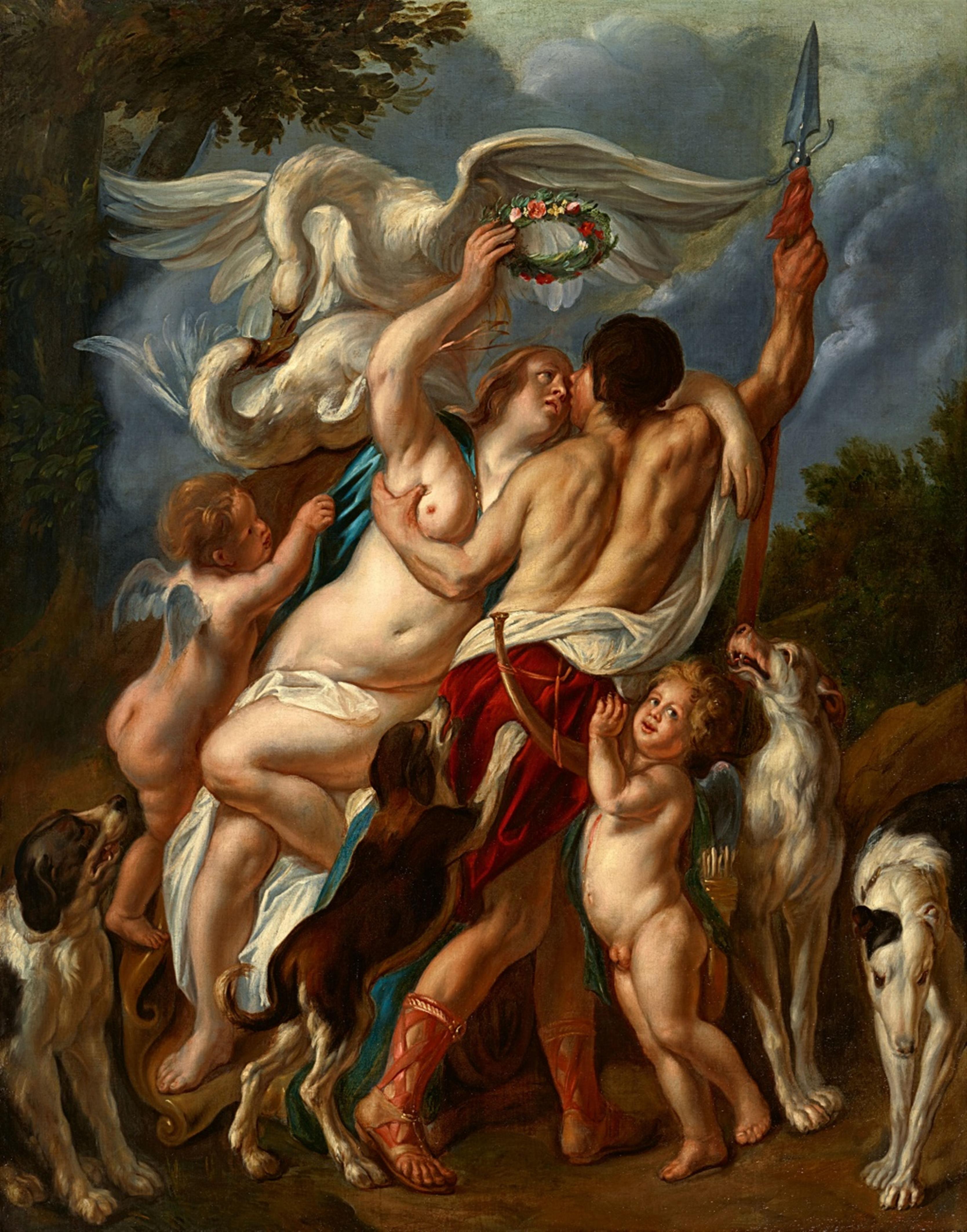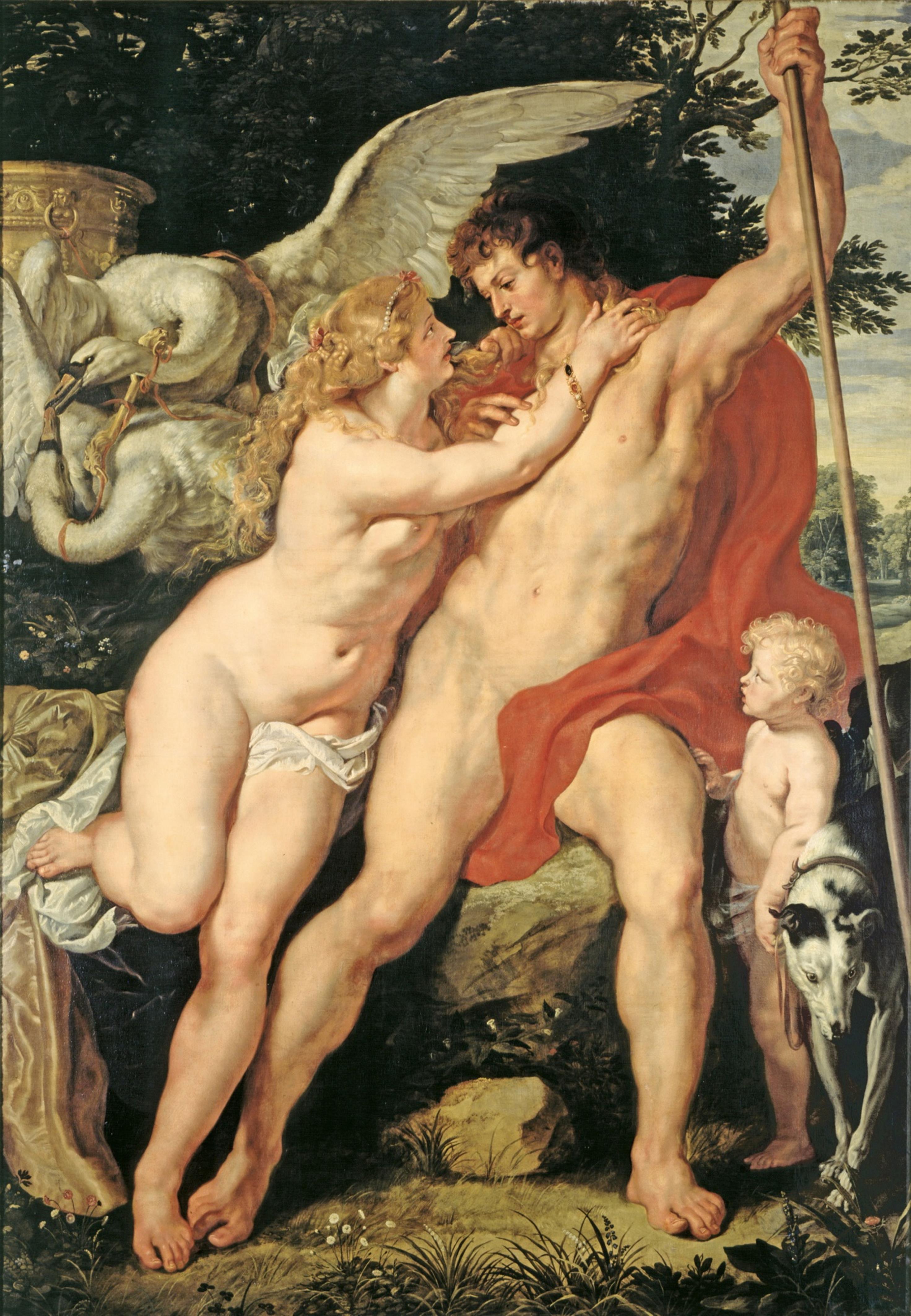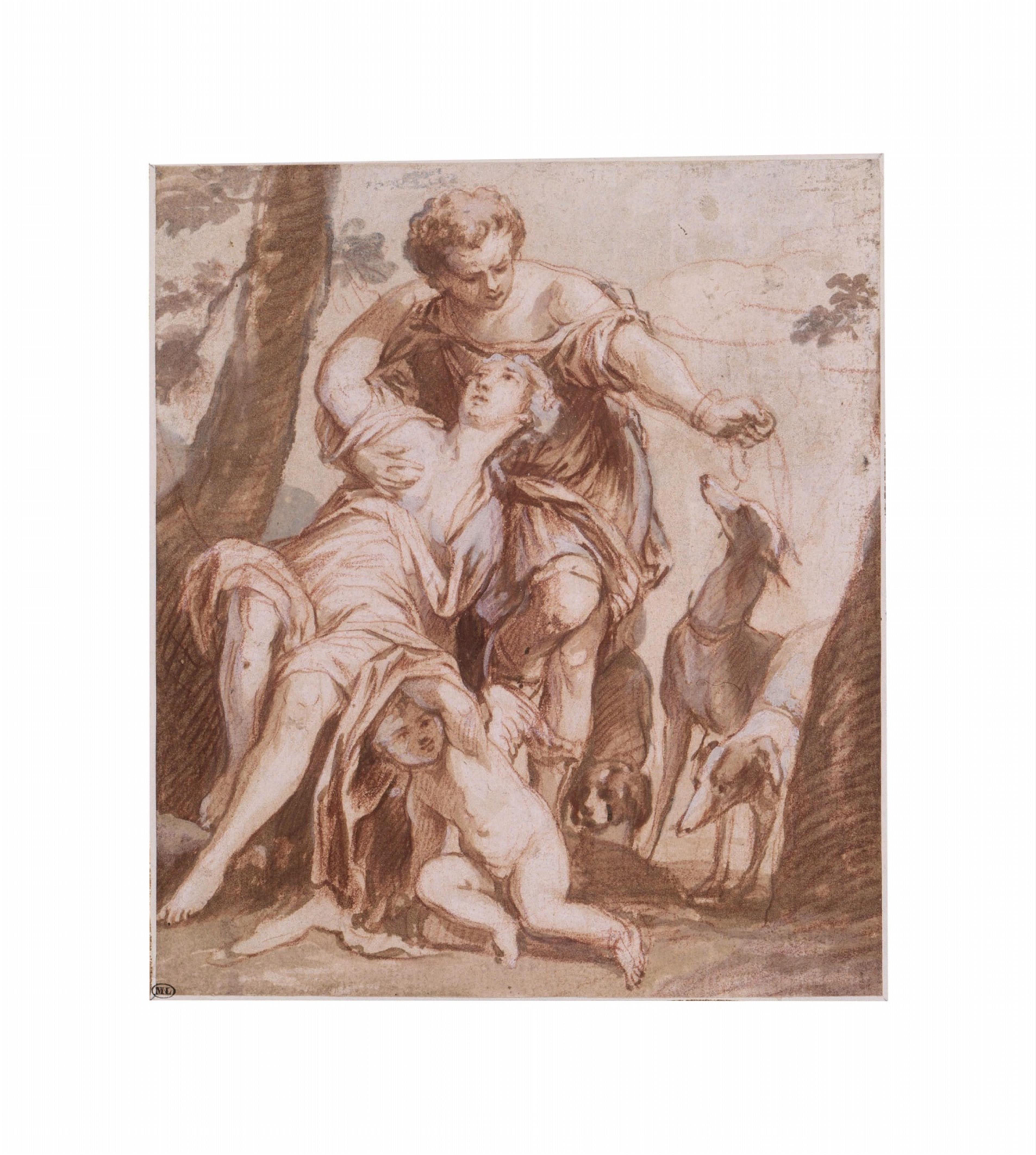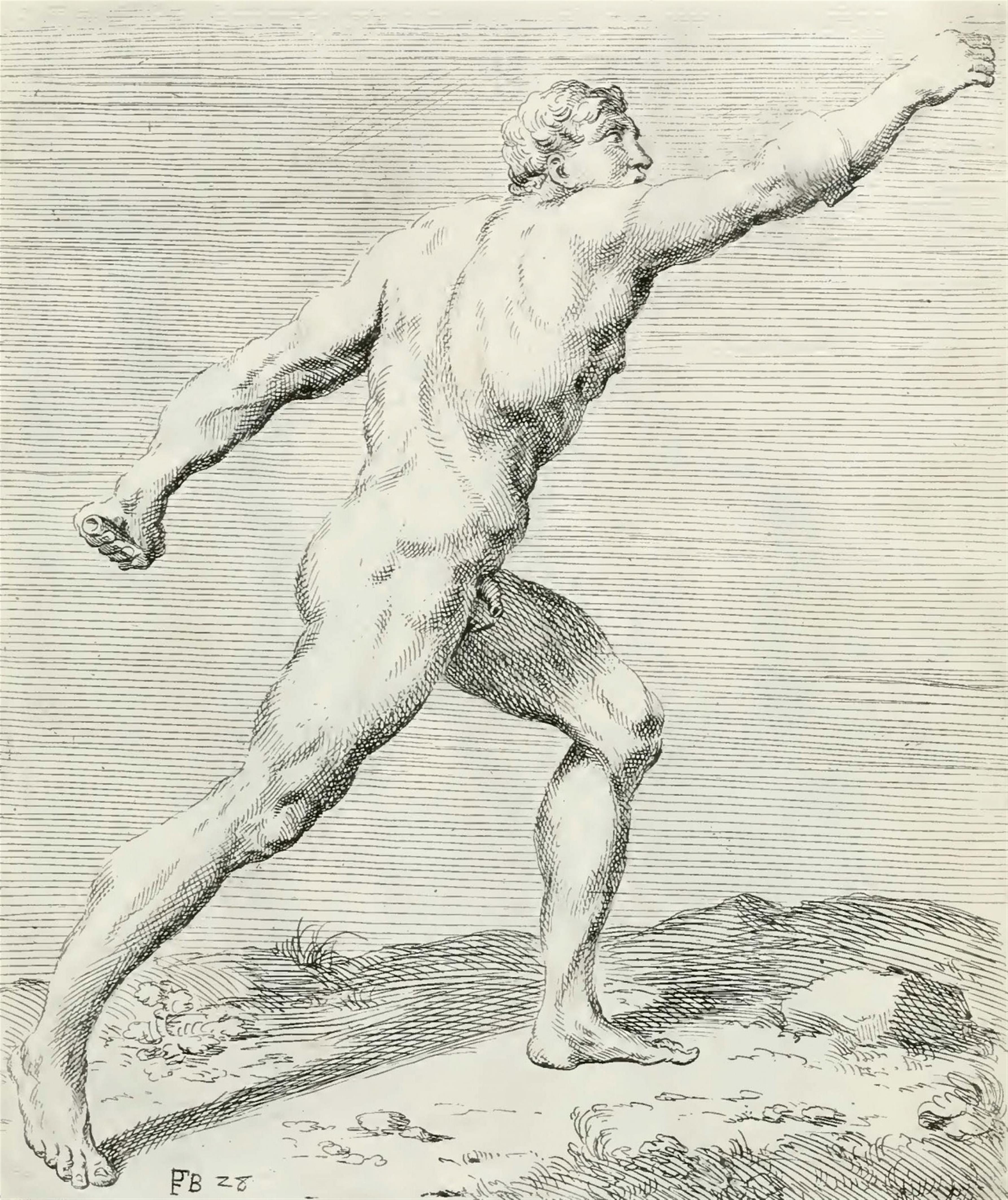Jacob Jordaens
Venus and Adonis
Oil on canvas (relined). 195 x 153 cm.
This late masterpiece represents the culmination of Jacob Jordaens' enduring fascination with this great mythological subject, seamlessly fusing the influences of Titian, Veronese and Rubens, as well as the antique. The imposing format and life-size figures clearly mark this as an ambitious history painting, executed between 1655 and 1660 and which, as Hans Vlieghe has noted, is “one of the finest works from the last period of Jordaens´s activity”.
Ovid's Metamorphosis, Book X, tells of the tragic relationship between Venus, the goddess of love, and Adonis, the handsome prince. Venus falls in love with the young Adonis, who, despite her pleading, does not wish to give up his passion, hunting. The inevitable happens and he is mortally wounded by a boar on a hunt. Venus cannot save him and turns his drops of blood into flowers, red anemones. In the painting, Jordaens depicts the moment when Adonis releases himself from Venus' embrace and, spear in hand, sets off on the hunt. Venus in turn tries to stop him, crowning his head as a sign of her love. Even the little Cupid, whose misguided arrow enflamed Venus's love, struggles together with a companion to hold Adonis back whilst the hunting dogs urge him to leave.
Jordaens is exploring here a mythological theme with a long and distinguished artistic tradition. In the 16th century, Titian coined his influential depiction of this theme with a painting for Philip of Spain, which gained fame as part of the “Poesie” cycle. Later, artists such as Paolo Veronese and Peter Paul Rubens dealt repeatedly with this popular mythological theme. Jordaens evidently drew inspiration from Rubens' Venus & Adonis of 1610 - today in the Museum Kunstpalast Düsseldorf (ill. 1). When compared, however, the two compositions also make plain that Jordaens' concern is to increase the drama of the separation by depicting Adonis from the back and not as Rubens does frontality, which he complements with a powerful contrapposto in Venus as she reaches to embrace him. The fact that Jordaens depicts the figure of Adonis from the back is remarkable in that the contrast of the front and rear views is a central artistic aspect in the pictorial narrative of this Ovidian mythology. As Titian wrote in a famous letter to Phillip of Spain, he shows the figure of Venus from behind in his “Venus and Adonis”, since he had depicted Danae for the “Poesie” series from the front. Rubens depicts Adonis variously from the front and the back; in his version from the 1630s, today in the Metropolitan Museum of Art in New York (inv. no. 37.162), he also shows Adonis in rear view. The various versions by Veronese show that he too constantly experimented with new aspects of how to depict Venus and Adonis together.
An antique sculpture probably served as a model for Jordaens' powerful rear view figure of Adonis, in which the “warm tonality and expressive brushstroke” (Hans Vlieghe) is most clearly visible - the so-called “Gladiator Borghese” preserved in the Musée du Louvre. One of the most admired of Roman antiquities, it was discovered at the beginning of the 17th century and exhibited in the Villa Borghese as a showpiece of the collection. As on other occasions, Jordaens seems to have consulted François Perrier's “Segmenta nobilium signorum et statuarum” from 1638 in which the Gladiator Borghese - mirrored and animated - is shown from all four sides (ill. 2). One detail also refers to Jordaens' occupation with a painting by Veronese, namely Adonis' grasp of Venus. This motif derives from a painting by the Venetian, now lost, but in the collection of Christina of Sweden at that time. Jordaens had seen it during the Queen's stay in Antwerp and recorded it in a drawing (ill. 3; Musée du Louvre).
Certificate
Prof. Dr. Hans Vlieghe, Antwerp, 25.9.2020.
Provenance
The Snowman collection. - His sale, Winkel & Magnussen, Copenhagen, 24.11.1936, lot 27. - Danish private collection. - Auctioned by Bruun Rasmussen, Copenhagen, 28.05.2019, lot 231 (as "in the manner of Peter Paul Rubens"). - Acquired there by the present owner.








